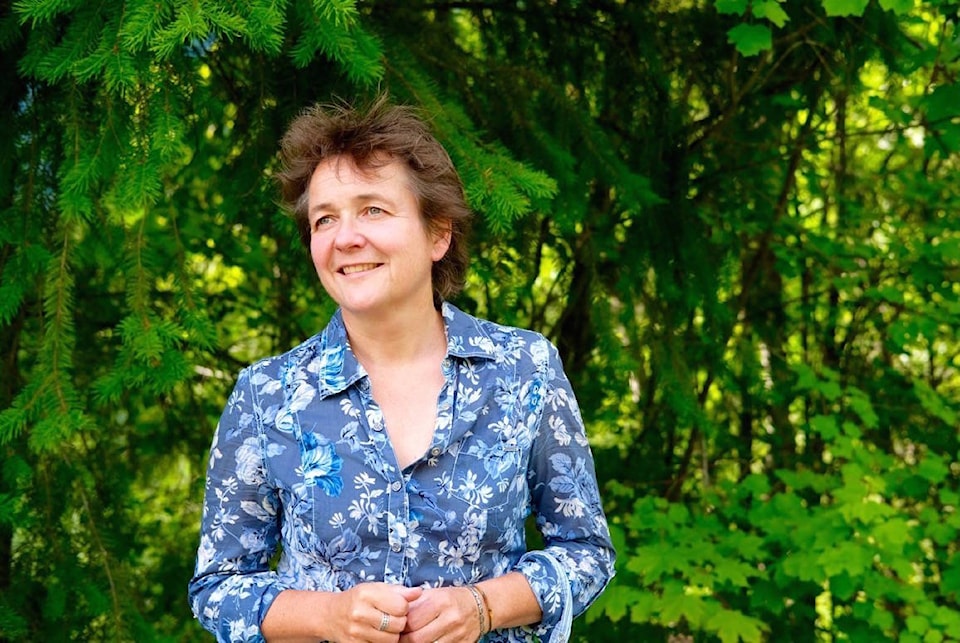A Nelson ecologist says the B.C. government is misleading the public when it states that 23 per cent, or 13.2 million hectares, of the province’s forest is old growth.
Rachel Holt, a consulting ecologist, says those numbers are technically correct but the province has lumped together several different kinds of old growth, and that 80 per cent of it consists of sites that can grow trees less than 15 metres tall at 50 years, and only three per cent consists of sites that can grow large trees over 20 metres tall that the public recognizes as old growth.
Holt is a registered professional biologist with decades of experience working with land management and old growth issues.
She and two other scientists — ecologist Karen Price and forester Dave Daust — published B.C.’s Old Growth: A Last Stand for Biodiversity (attached below) in April on their own, not on behalf of any organization or government.
“These [large old growth] ecosystems are effectively the white rhino of old growth forests,” the report states. “They are almost extinguished and will not recover from logging.”
Holt says they were concerned the public does not know this.
“And we are worried the people who make decisions don’t know it,” she told the Star. “We know the foresters who work in the province all know this.”
Holt says if the public thinks there are 13.2 million hectares of old growth forest with large trees, they will not worry.
“They will think there is an effective strategy in place to maintain this incredibly valuable resource, when in fact there is very, very little of the real old forest left and we do not have an effective policy in place to protect it.”
Why would the province want to minimize the problem by publishing what Holt says are simplistic statistics?
“Because it reduces the amount [of old growth] you have to keep,” she says, and keeping old growth conflicts with the province’s need to maintain or increase the annual allowable cut.
The report was originally a submission to the province’s old growth strategic review panel, commissioned last year to travel the province and get the public’s opinion on how to manage old growth. The panel has since written its report but the province does not plan to release it until late this summer.
The province’s response
Asked by the Star for a response to the report, the Ministry of Forests, Lands, Natural Resource Operations and Rural Development was not defensive. A spokesperson said in an email in part:
“This is a problem many years in the making and it won’t be solved immediately. That’s why we launched a review and engagement process by two independent experts [the province’s old growth strategic review panel] to provide recommendations.
“We agree that more work needs to be done with environmental organizations, First Nations, industry and other groups to resolve this.”
Holt says the province has known for more than two decades about the problems her report describes.
Recommendations
The report says biodiversity is at risk in B.C. and there are no solid policies to protect it. The authors make a number of detailed recommendations, which include:
• Immediately stop harvesting the largest and oldest trees.
• Develop and implement ecologically defensible targets for old forest.
• Improve implementation to ensure that old forest retention protects the last remaining productive old forests, and protects functional forests for the future.
The report details how the province has neither the policies nor the staffing to carry out these recommendations.
“Little human effort is tasked with protecting old forest values, while much is focused on harvesting.”
Old growth and biodiversity
One of the hallmarks of large old growth forest is complexity, the report states.
“The structural complexity creates myriad habitats that, given sufficient time, support diverse interacting communities of specialists and generalists — from a rich soil micro-fauna to unique canopy communities, from berry bushes to devil’s club, from marten to caribou.”
And that complexity has a purpose: “harnessing the sun’s energy through photosynthesis, storing carbon in large live and dead trees, collecting, filtering, cooling and transporting water, gathering nutrients from the atmosphere (e.g., via epiphytic lichens), providing nurse logs for the next generation of trees, and building soil.”
And that’s part of the larger picture of biodiversity.
The report describes how forest biodiversity and ecosystem function are interdependent, and argues the existence of significant amounts of old growth are essential to both.
B.C.’s Old Growth: A Last Stand for Biodiversity is attached below.
bill.metcalfe@nelsonstar.com
Like us on Facebook and follow us on Twitter
B.C.’s Old Growth: A Last Stand for Biodiversity by BillMetcalfe on Scribd
